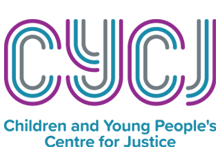In this guest blog for the University of Strathclyde led Talking Hope project, Margo Mackay (Operations Director at Talking Mats Ltd) shares what this innovative social enterprise is doing to support and promote balanced conversations in the justice system with young people.
What is Talking Mats?
The aim of Talking Mats is to create a safe, non-judgemental space for conversations, using visual symbols. It actively enables the practitioner to better understand the person’s feelings and circumstances. Talking Mats helps build connection, providing a strong foundation for the practitioner (‘listener’) and person (‘thinker’) to work together.
The tool promotes balanced conversations, because it gives the person control – they hold the cards (literally) and they choose where to place them on the mat. They also decide how much or how little they want to say while they are doing this. This dynamic actively builds trust and addresses the power imbalance which can so often be seen in practitioner conversations.
Talking Mats in Context: The justice system
Talking Mats is used in a wide variety of contexts, one of which is the justice system. There are high rates of communication difficulties amongst children, young people, and adults within the Justice system. The person may not have a diagnosed impairment, but often may have communication difficulties which can result/have already resulted in negative, and sometimes criminal, behaviours. In addition, they may well have lost confidence and faith in working with others; having felt judged and condemned at the outset. It is therefore especially important to support communication and form connections with people in the justice system. Talking Mats can be a powerful addition to the practitioner’s tool bag as it creates a safe space for people to talk about their own feelings, views and experiences.
Avoiding ‘why’ questions and giving them control
All behaviour is communication and it is often unhelpful and unrealistic to ask a person to explain their own behaviour directly. Emotional regulation can often be an area of difficulty and so creating a calm space where there is time to think and reflect is key.
The Talking Mats process takes the focus completely off the person through saying, ‘Ok, let’s take some time to think. I’m going to show you a picture, where do you want to put it on the mat?’ It hands control of the conversation over to the ‘thinker’ and gives them time to process and respond. Visual processing is located in a different part of the brain to language processing, therefore using a different approach can help to free up new thinking and expression.
In Talking Mats, we never ask why because, cognitively, ‘why’ is the most complex question that you can ask. It involves reasoning, the power of weighing things up, thinking about consequences, and justifying your answers. It takes away control. You are more likely to get ‘don’t know’ responses to a why question because it’s too difficult to formulate an answer. If you want to know why, it’s best to break the conversation down in a visual way, using a Talking Mat.
Talking Mats in practice
When I worked in a Young Offenders Institution, I used Talking Mats regularly as part of my job in order to listen to young people’s views and to gauge their communication style. Often the young people would open up about aspects of their life because they felt heard and understood. The mutual trust that was quickly established often led to them articulating what they needed or to describe what was not working well for them.
Going forward
It is not the practitioner’s role to decide what should happen next, after completing the Talking Mat. Instead, the control lies with the young person. For example, you can say ‘When you look at your mat, what are you thinking?’ That is called the review and reflect stage, which helps the young person to decide next steps. Asking questions such as How can we support you? what would you like to work on? What would you like to change?’ Hope is closely linked to imagination: what kind of future would the young person like to create? – what are their aspirations? Particular topics can then be explored further through ‘sub-matting’, using another Talking Mat, including exploring what the young person feels is helpful/not helpful, or what they would like to work on/would not like to work on.
Practitioners can sometimes lack confidence in their own communication skills. However, if you have a structure and a way of framing a conversation it can significantly improve the dynamics and effectiveness of an interaction. The TM framework can give practitioners confidence and a fresh approach to having meaningful conversations.
It can be both liberating and hopeful for practitioners to support young people in having a greater say in decisions affecting their lives. This helps young people feel listened to, respected and understood.
In order to understand the TM framework, we recommend that you complete the TM Foundation training. Details are available on the Talking Mats website.
About our blogger
Margo Mackay was previously a Speech and Language Therapist in the NHS and has worked in a variety of settings to support children and young people with Additional Support Needs. She is an advocate for rights-based practice and in 2019 wrote a report for the Scottish Government called ‘Can Scotland be brave?’ The aim was to help practitioners understand what UNCRC means in practice, once it becomes Scottish law.
Talking Mats is a way of having a visual conversation which provides support for thinking and self-expression and was developed from research at Stirling University. Talking Mats’ vision is to improve the lives of people with communication difficulties by helping them to think and communicate effectively about things that matter to them.

Leave a Reply
You must be logged in to post a comment.